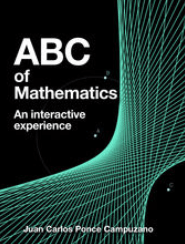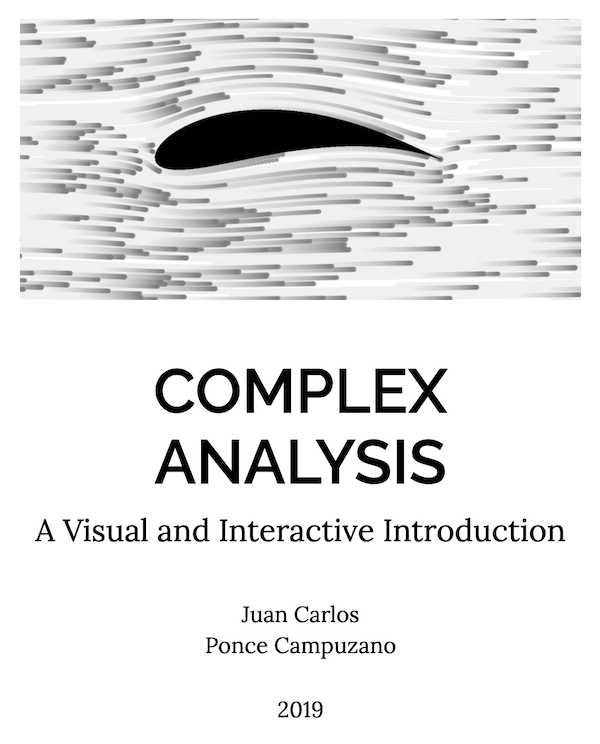Mystery curves

Mystery curves
Mystery curves
Goal:
Explore mystery curves
Mystery curves
- Intuitive definition of mystery curves.
- How to construct these curves
- Explore some of its mathematical properties.
- Propose a challenge for you.
Route
1. Definition
Epicycles
Simple rotations
1. Definition
1. Definition
Double rotations
1. Definition
🤔
2. Construction in GeoGebra
Mystery curve = ?
Steps to contruct Epicycles
A = (0, 0)
c = Circle(A, 1)
B = Point(c)
t = Slider(0, 2 pi, 0.001, 0.4)
B' = Rotate(B, t)
v1 = Vector(A, B')
d = Circle(B', 1/2)
C = Point(d)
C' = Rotate(C, 6 * t, B')
e = Circle(C', 1/3)
v2 = Vector(B', C')
D = Point(e)
D' = Rotate(D, -14 * t, C')
v3 = Vector(C', D')
locus = Locus(D', t)a.k.a. GeoGebra Script
2. Construction in GeoGebra
Steps to construct mystery curve
R1 = 1
R2 = 1/2
R3 = 1/3
w1 = 1
w2 = 6
w3 = -14
fx(x) = R1 * cos(w1 * x) + R2 * cos(w2 * x) + R3 * cos(w3 * x)
fy(x) = R1 * sin(w1 * x) + R2 * sin(w2 * x) + R3 * sin(w3 * x)
a = Curva(fx(t), fy(t), t, 0, 2 pi)a.k.a. GeoGebra Script
2. Construction in GeoGebra
3. Rotational symmetry exploration

{1, 6, -14}
{1, 6, -14}
3. Rotational symmetry exploration
What is the relationship between the frequencies \(\{1, 6, -14\}\) and the rotational symmetry of order \(5\)?
🤔
3. Rotational symmetry exploration
\(1-6=-5\)
\(6-(-14)=20\)
\(1-(-14)=15\)
The greatest common divisor of \(-5, 20,\) y \(15\) is:
5
\(1, 6\) y \(-14\) congruent 1 modulus 5
\(1,6,-14 =1 \left(\text{mod} \, 5\right)\)
3. Rotational symmetry exploration
1. Look for rotational symmetries of order 3 and 4.
2. What is the order of symmetry of the numbers 2, 8, -10?
Note: The common factor for the numbers 2, 8 y -10 is 2.
3. Rotational symmetry exploration
Activity
-
Define the values of \(R_1\), \(R_2\) and \(R_3\) using the command
-
RandomUniform( <Min>, <Max> )- Da por resultado un número real aleatorio a partir de una distribución uniforme en el intervalo [Mínimo, Máximo].
-
-
Define the values of \(\omega_1\), \(\omega_2\) and \(\omega_3\) using the command
-
RandomBetween( <Min> , <Max> )- Genera un número entero aleatorio entre el mínimo y el máximo (inclusive).
-
Example:
R1 = RandomUniform(0.5, 4.5)
w1 = RandomBetween(0, 9)3. Create a boton with the command UpdateConstruction()
3. Rotational symmetry exploration
Example:
R1 = RanformUniform(0.5, 4.5)
w1 = RandomBetween(0, 9)3. Create a boton with the command UpdateConstruction()
3. Rotational symmetry exploration
Activity
Share your work in GeoGebra Classroom
Join in with the code:
YHEG X7HK
or use the link:
In Twitter/Mathstodon
Actividad
By email
3. Rotational symmetry exploration
4. More mystery curves

4. More mystery curves

4. More mystery curves

4. More mystery curves
4. More mystery curves
Challenges in GeoGebra
1. Build mystery curves using complex numbers
2. Generalize the construction for \(n\) terms
4. More mystery curves
Twitter/Mathstodon
Share your work in GeoGebra Classroom: YHEG X7HK
References
The artful mathematics
of wallpaper patterns
Frank A. Farris
Resources
Book of activities: Mystery curves
Activity: Change of frequencies
Applets used in this presentation
Video Workshop - Institut GeoGebra Valencia
Thanks for your attention!
Visit 🔗 jcponce.com for more projects

